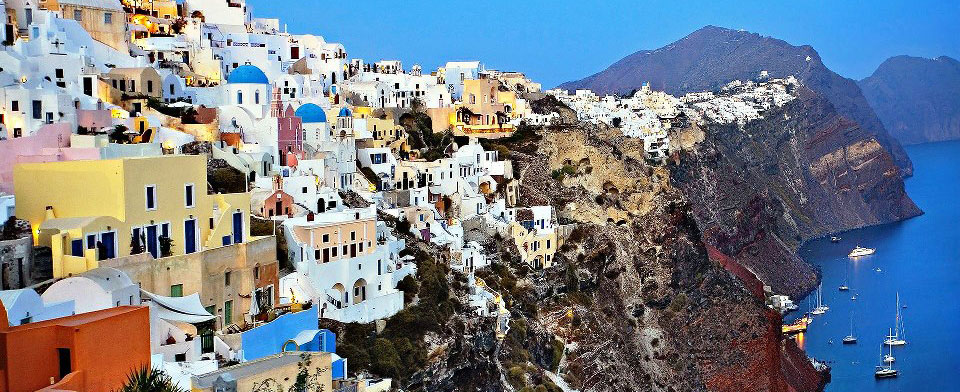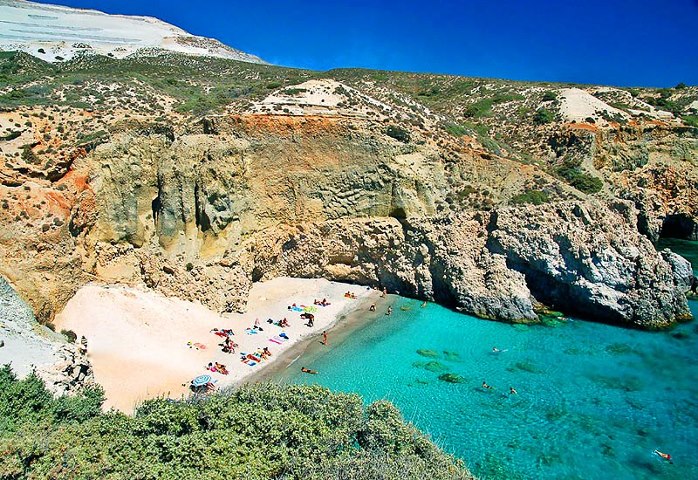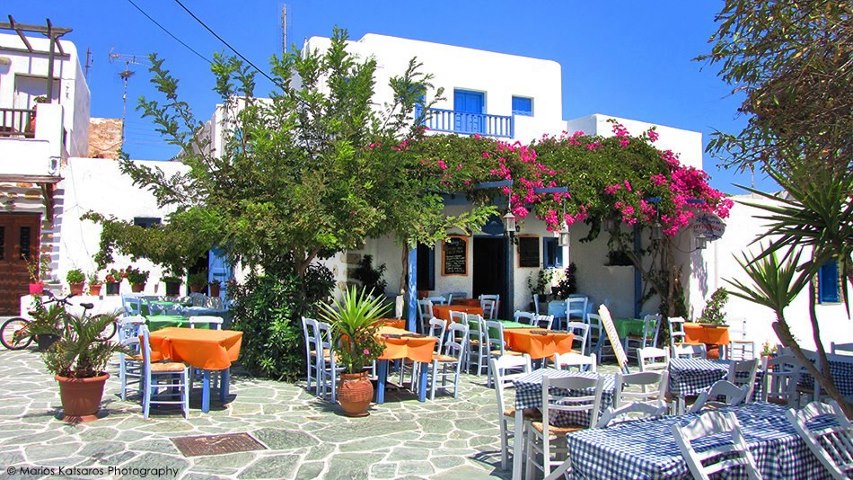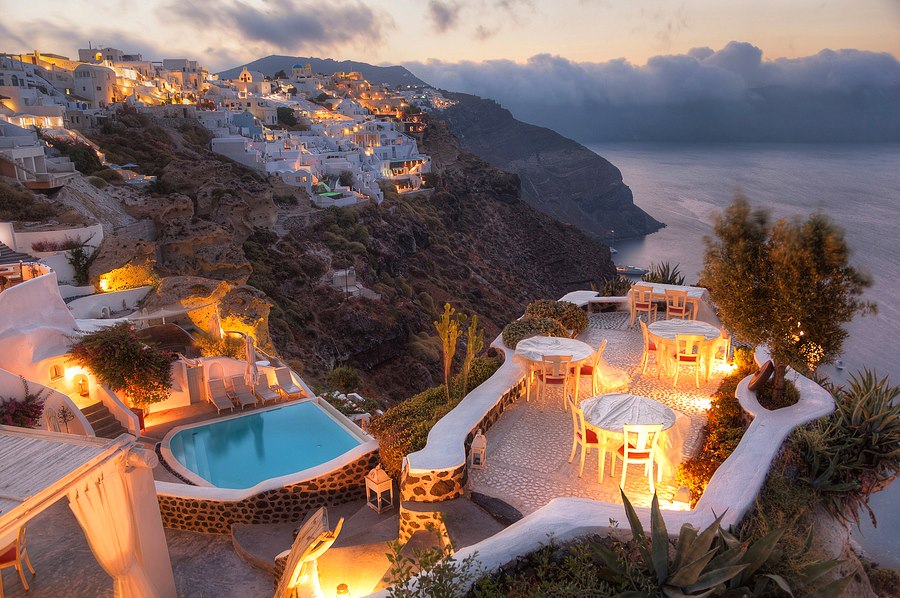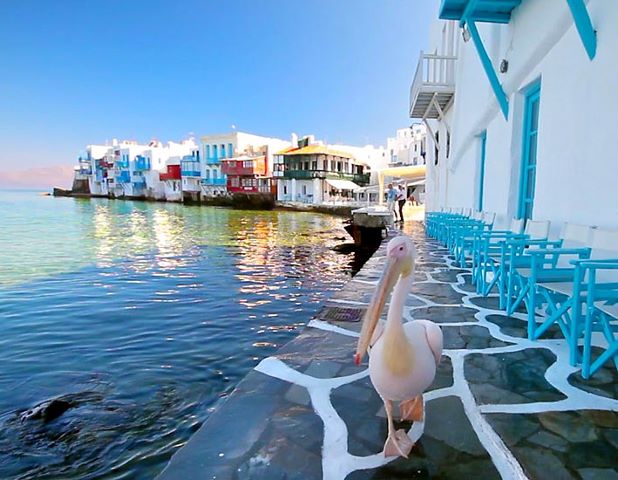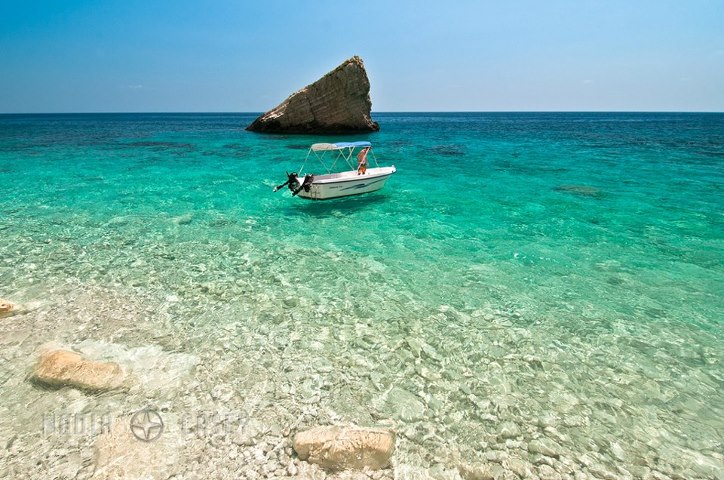Easter in Greece is celebrated on the first Sunday after the full moon of vernal Equinox and is the most important Christian feast regarding the folklore festivals and celebrations. Traditional customs revive in Cyclades during the Easter period. The Passions and Resurrection of Jesus Christ are celebrated with special splendor and devoutness in each island of Cyclades.
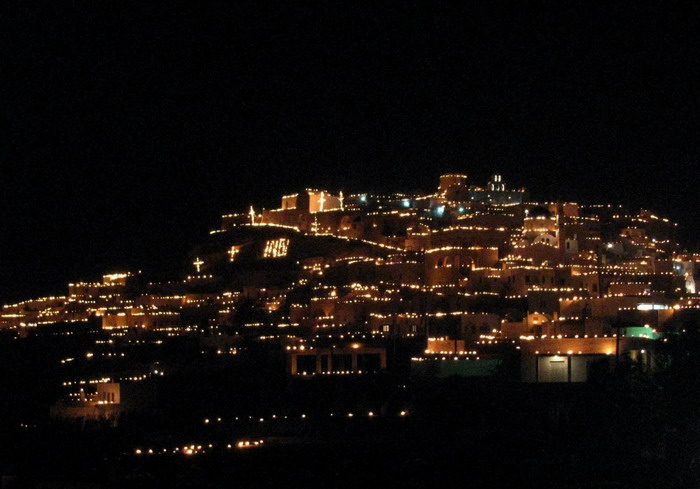 |
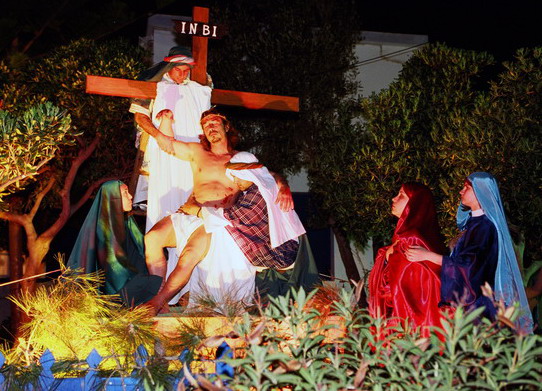 |
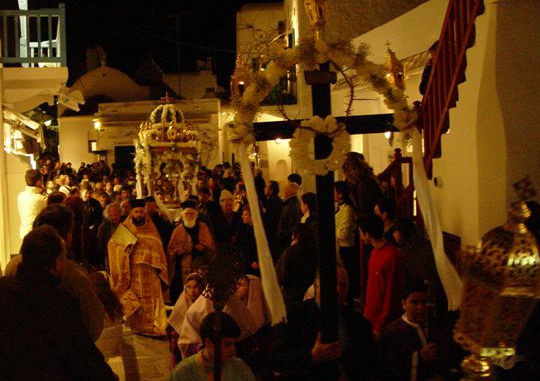 |
 |
-
On the island of Amorgos the Saturday of Lazarus the housewives are baking dough doll-shaped cookies called "lazarakia" or "kouklakia". The Holy Week starts with the traditional whitewash of houses and streets. On Good Friday, they treat local people and visitors to bread, olives and Lenten confectionery. In the evening of the same day, women sprinkle the procession of Jesus Christ's portable Holy Sepulchre with perfume. At the Easter Sunday afternoon, young people are gathering in churches's courtyards and are taking part in team traditional games.
-
At the afternoon of Holy Saturday, on the island of Anafi, around the village the smell of burned timber (ampeloklada) is pervasive; the timber is burned for many hours, in order to prepare the furnace (fourni) for the baking -in pan- of lamb with local cheese (anafiotiko), which is covered well with foil. The oven's door as well as the chimney is sealed with mud; therefore air cannot pass and the meat cannot be burned. Also very tasteful are the yellow bread or else called cheese pie as well as the "melitera'" (sweets made of fresh cheese).
-
On the island of Andros at the Resurrection afternoon young people place iron pipes in the ground, fill them with gunpowder and fire them. On Resurrection day people are eating the traditional "easter" roasted lamb or goat (usually kid) cooked in wood-burning oven and stuffed with vegetables. In Paleopolis, in Korthi and in other villages the afternoon of Easter Sunday people are playing in the streets a traditional game -similar to bowling- called "tsounia".
-
On the island of Heraklia (Iraklia) the housewives on Easter's Eve are cooking "magiritsa" (a creamy, lemony soup made from the lamb sweetmeats) and "melitinia", which are sweets made of fresh local goat cheese. During the afternoon they are preparing the traditional stuffed with rice and liver lamb, which is cooked in wood-burning oven, until the end of Holy Saturday's service. On Easter day people gather in house's courtyards, cook lamb and have fun listening to traditional songs and dancing all night long.
-
On the island of Ios the Saturday of Lazarus people are baking dough raisin doll shaped cookies called "lazarakia". On Good Friday, after taking down Christ from the cross, young people play a game with small iron-maded red and green balls. All the portable Holy Sepulchers are carried in procession through the streets while women and girls, in choruses, psalm hymns. The week after Easter, the cultural Association of Ios called "Foiniki" revives the custom of "swing".
-
On the island of Koufonisia on Great Thursday, after the end of the church service, the local residents gather in church and decorate -all night long- with flowers the Holy Sepulchers (called epitaphios), while a lady is psalms Virgin's Mary's mourning chant. On Good Friday the port is floodlit by torches and the inhabitants of the island stream into the streets and follow Jesus Christ's portable Holy Sepulchres. On Easter day, people are eating stuffed with rice lamb, which is the traditional food of this day. The following day, the nameday of the patron Saint of the island, Saint George, is celebrated with a procession of the Saint's icon, which is accompanied by fishing boats sailing along the procession. After the end of the procession, a traditional feast takes place; food and drinks are offered by the "panigiras", who organizes the feast (after being selected by lot).
-
On the island of Kythnos, on the evening of Holy Saturday, those who have relatives that have recently died, are bringing roast meat, wine and bead to the church. After these have been blessed by the priest, they are distributed among visitors and residents of the island. Kythnos celebrates Easter with a traditional custom called Kounies (swing). On Easter Sunday, a swing is set up in the town's main square in which boys and girls in traditional costume take a swing. To push someone on the swing on this occasion is a commitment to marriage before God and men.
-
On the island of Milos, in Plakes village, on the evening of Good Friday the representation of taking down the Holy Sepulchres is taken place. On Easter Sunday the "burning of Juda's effigy" is taken place; this is a custom that its origin stems from the early Christian time. On the same day the custom of "gunpowder" is taken place in the courtyards of Saint Spyridon (Triovasilos) church and Saint George church.
-
On the island of Mykonos women whitewash the houses and bake dough doll-shaped cookies in called "lazarakia". On Good Friday takes place the procession of the portable Holy Sepulchres in Matoyianni; while on the Holy Saturday the liturgical service of the Resurrection takes place at the monastery of Palaiolastro and at the Metropolis of Alefkandra. On Easter Sunday local residents burn Juda's effigy. Series of spits are set in Yialos, in order to prepare the roasting of lamb on the spit.
-
On the island of Naxos, Easter is celebrated in all monasteries and churches with religious devoutness. On Good Friday young ladies clean the churches and decorate the epitaph. On the Easter day, the local residents prepare the traditional "patoudo", which is lamb stuffed with vegetables, lettuce, currants, rice, eggs and cheese cooked in oven.
-
On the island of Paros, the procession of the portable Holy Sepulchres at Marpissa presents an interest for all the island's visitors. A lot of people as they chant follow the procession. During this route a visitor can notice children dressed as Roman soldiers or disciples of Christ react scenes from the entry into Jerusalem, the prayer of the Mount of Olives, the Crucifixion and the Resurrection. At midnight on Holy Saturday, the island is filled with the lights and noise of countless fireworks. In Marpissa arena on Easter day the festivities go on with the meal of Love, which is an open party where traditionally grilled lamb is offered and of course with a lot of music and dancing.
-
On the island of Santorini on Lazarus Saturday the locals made preparations for Lazarus, a construction special crafted for the day consisting of a cross covered by rosemary and decorated with flowers and laurels. On Good Friday morning young women decorate the epitaph with flowers. In Oia, the Holy Week service took place at the church of Virgin the Platsani. In the village of Pyrgos after the unnailing of the Holy Sepulchres, the "tantalo" comes out on the streets, in order to announce the procession and the church bells ring slow and steady. Thousands of faithful lining the narrow streets holding candles and slowly following behind the procession around the village. The women from their courtyards sprinkle with rosewater the procession.On Holy Saturday, after the Resurrection service the local residents take a "koutsouna" (baked pastry) and a red egg and go to their home to eat "sgardoumpia". On Easter Sunday, in several villages take place a kangaroo court where a "Jew" (a fabric human effigy) is sentenced to death by hanging and burning. In Emporio village, the residents go around making sound by hitting metallic items, casting away, by that way, the "forces of evil".
-
On the island of Serifos, late in the evening of Holy Saturday, all families go to church holding a basket, which has cheese, cookies and red eggs (as many as the number of the family members). After the end of the Resurrection service, the devotees carry their white candles, which they have lighted with the Holy Flame, back home. With the Holy Flame of the candles they thrice make the sign of cross on the door post over the front door of their houses. Then they all gather around the festively laid table, they crack and eat red eggs.On Holy Saturday, after the Resurrection, the inhabitants of the island create a Judas effigy, which they symbolically burn.
-
On the island of Sifnos, exists the easter custom of Resurrection "greeting", which lasts over 40days. On Great Thursday, the housewives are busy baking the traditional "Easter birds" (a variety of sweet egg-bread kneaded in the shape of animals and birds) and dye and decorate Easter eggs.On Great Thursday, when the priest reads the Sixth Gospel, young men and women rush to all the island's chapels, in order to light the holy lamps. They return later, so as to decorate the epitaph.Holy Saturday and Resurrection as well as Easter Sunday are celebrated with devoutness in the monasteries of Virgin the Vrisiani, Virgin the Koxi in Artemonas and in other churches as well. On Sifnos, the Easter lamb is slowly cooked in "mastelo", a ceramic pot placed on a grill made of vine sticks and is accompanied by the local red wine and by a variety of local cheese and honey cheese-cake called "melopita". On Easter Sunday, at the central square of Apollonia, the Cultural Association of Sifnos, organizes the burning of Judas effigy. In some villages a game resembling bowling ("tsounia") is organized.
-
On the island of Syros the communities of Catholics and Orthodox celebrate Easter together. In Ano Syros (Upper Syros), the portable Holy Sepulchres of the Catholic Community set off from the church of Saint George, while in Ermoupoli the starting point of the procession is the church of Evangelists. The Orthodox Holy Sepulchres set off from the parishes of Saint Nicolaos, the Assumption and the cathedral of the Saviour's Transfiguration. The end destination of all the portable Holy Sepulchers, which are carried in procession through the streets is Miaoulis central square. The portable Holy Sepulchres of the Orthodox community are followed by people holding poles with the Chiton, sponges and dice, symbols of Jesus Christ's Passions. In the orthodox church of Resurrection, which is located at Vrontados hill of Ermoupolis, the liturgical service of the first proclamation of the Resurrection takes place on Holy Saturday morning; the members of congregation hit the pews of the church with all their strength. After the end of the Easter Resurrection service, the Catholics carry in procession Jesus Christ's statue, which is placed in a golden baldachin open on all four sides and covered with violets, lemon blossoms and lilacs.
-
On the island of Sxoinousa on Easter day, all local residents are gathered in the central square and are playing a traditional game similar to bowling called "bilioi".
-
On the island of Tinos, in Sklavoxori village, the procession of the Epitaph on Good Friday is simple and is celebrated with great devoutness. On the same day, all the churches in Chora, after following their own procession, assemble the Epitaphs at the harbour, by a grand platform. In particular, the Epitaph representing the St. Nektarios church makes its way towards the beach, in the region of Kalamia at Kionia, where it is placed into the water. On Easter Monday, in the village of Ktikados revives the traditional custom "Table of Love", where a feast with traditional appetizers is held. On Great Thursday, in the village of Volakas, at the catholic chapel of Virgin Kalaman, after the holy service, takes place a feast with music and food.
-
On the island of Folegandros, on the Holy Saturday, all the houses open their doors, in order to receive the blessing of the icon of the Annunciation of the Holy Mother. The carrying in procession of the icon of the Virgin to Chora starts on Easter Sunday. On Easter Monday the procession passes through Ano Meria; while on the third day the carrying in procession of the Virgin's icon passes the settlements of Petoussis and Livadi (through mountain paths) and gets to the region of Karavostasis. The fishermen receive the presence of the Virgin in their caiques and kneel before her icon. At the night the devotees return the Virgin's icon to the chapel, where it remains there until the next Easter.
Relative Articles
See also in this category
- History of Cyclades
- Rebetiko Festival “Syra of Markos Vamvakaris” 2021
- Christmas in the Cyclades
- Carnival in the Cyclades
- 6th International Rebetiko Festival “Syra of Markos Vamvakaris” from August 29th to September 2nd 2022
- Rebetiko Festival “Syra of Markos Vamvakaris” 2021
- Culture events and festivals in Cyclades islands 2021











